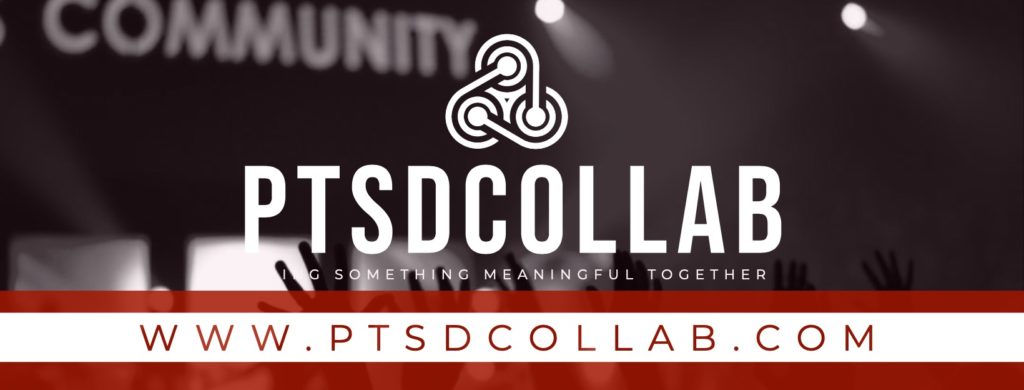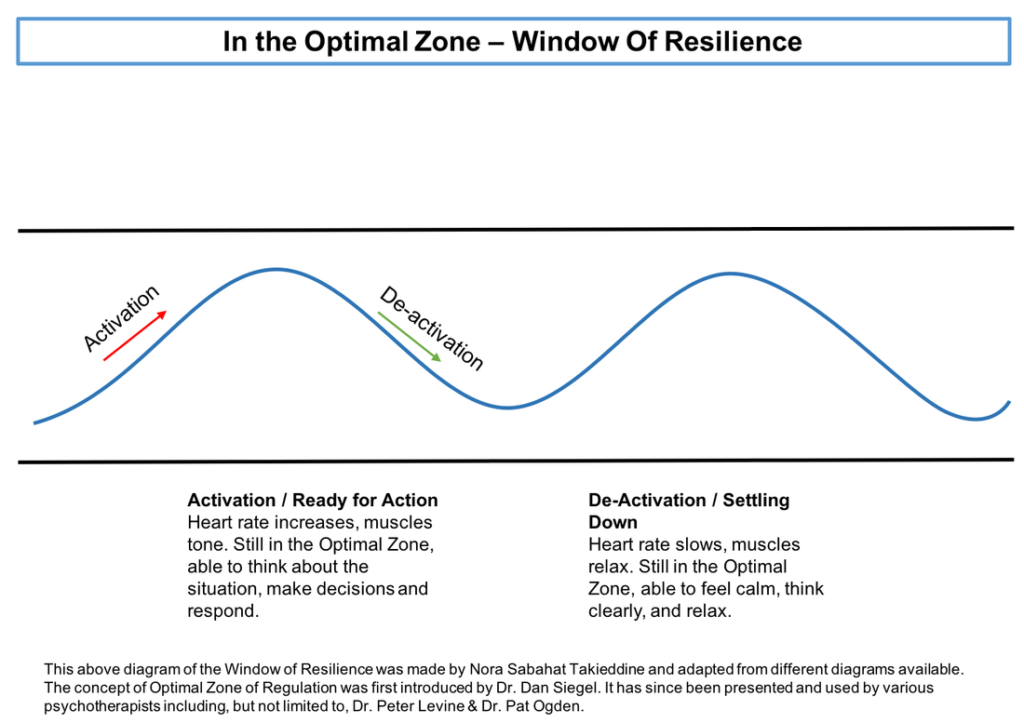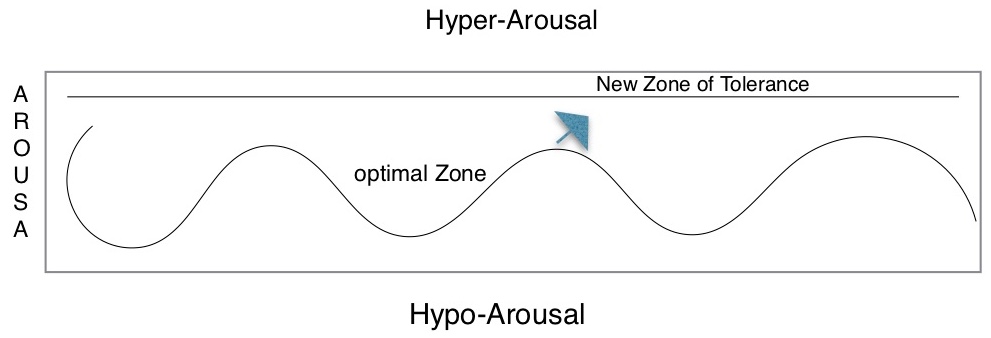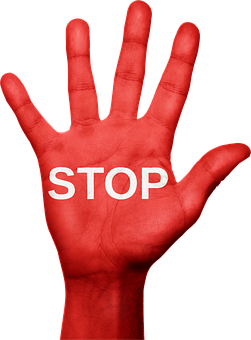Miami: PTSD and the Window of Tolerance
By Rick J. Scarpello, LMFT
Phone:415-638-2660
Email:Rick@Rickscarpellotherapy.com

Blowing up over the small stuff and how to manage it.
It never fails. I am going along, seemingly handling all the big deals in my life, balancing all the balls, spinning all the plates: family, job, continuing education for said job, bills, friends, and just when I feel like I have it all going for me… WHAM! The tiniest issue takes my feet out from under me and I’m a puddle on the floor. “How the hell did that happen?” I ask, scraping myself together. Well, I’ll tell you one reason; my window of tolerance, and I just smashed through it.
What the hell is the Window of Tolerance?
Glad you asked. The Window of Tolerance is an idea coined by Dr. Dan Siegel to describe normal brain functioning in the face of day to day challenges. The idea is that we have a certain amount of space developed when we were young, that allows us to handle the ups and downs of emotion and feeling. In other words- how much stress you have and how you handle it. If we stay within that space, we tend to do just fine.We can handle the normal hurt, anger, frustration, stress, anxiety, and pain that comes with being a human being on this planet. See the example below.

As you can see, when we’re worked up, our sympathetic nervous system (fight, flight, or freeze) is revved up. Heart rates increase, pupils dilate, and we start breathing hard and our mouths get dry. When we relax, that all comes back to balance because our para-sympathetic nervous system (the “time to chill” response) takes over, and our heart rate slows, muscles relax, and pupils restrict. This happens because we have learned that the stressors we’re experiencing aren’t necessarily life threatening, or at the very least, we know how to handle them. However, there are times when this system gets overwhelmed and leads to, let’s say, a freak out over a chocolate malt instead of a chocolate shake (though I might add, is a perfectly understandable response if you really hate chocolate malt as I do). So why does this happen?
Hyper and Hypo-Arousal
Hyper and hypo-arousal are fancy ways of saying you are overwhelmed and either react REALLY BIG (hyper-arousal) or almost non-existent (hypo-arousal) to a given situation. For example, you might scream at a barista for giving you the wrong change (hyper-arousal), or you might have zero response to seeing someone get hit by a car (hypo-arousal). You have fallen outside of your Window of Tolerance, and into “KEEP US SAFE” territory.
What does this have to do with PTSD and CPTSD?
When it comes to PTSD (Post Traumatic Stress Disorder) and CPTSD (Complex Post Traumatic Stress Disorder) a few things are happening, our “fight or flight” mechanism is stuck and it either happened:
- In one big BANG or multiple big bangs (big traumas)
- Progressively over time (multiple little traumas, think of a frog in a pot of slowly heating water)
In the instance of “in one big BANG!”, it can be clear to see the issue that started fight or flight: any actual or perceived threat of death, threat of serious injury, or threat of sexual violence (1). When it’s progressive small traumas over time, it is a little more difficult to see. Tiny threats over time accumulate and shrink our tolerance zone to a much smaller space. When this happens, the headspace that is usually allotted to handle the typical daily issues is now reduced to a very small sliver as you can see below.

Even the smallest issue can trigger a fight or flight response because the body is essentially always in fight or flight mode (imagine a car in park with the gas pedal constantly pressed to the floorboard). Hormones designated for this activity CRH (Corticotropion-Releasing Hormone), ACTH (Adrenocorticotropin Hormone), and Cortisol are all being constantly released because a threat is being constantly identified, even if it is not visibly there.
Great, I’ve got big words to use, now what do I do about it?
The good news is there are plenty of ways to bring your Zone of Tolerance back to optimum levels. The not so exciting news is that it takes time, effort, and patience to achieve these changes. As with all things, know your limitations, if something doesn’t feel right, don’t do it. The five I like most are:
BREATHING
I catch more crap for telling my clients to breath than I care to count. But in the end, this is by far and away, in my experience, the most effective method to relax and retrain the body and brain to create more headspace in your Window of Tolerance. The easiest method for me is:
4-5-7 breathing
Breath in for 4 seconds, hold for 5 seconds, and out for 7 seconds or until all of your breath has been expelled. When you inhale there is an activation of your “fight or flight” system, but when you exhale the relaxation is activated, therefore more exhale, more relaxation! There are some great phone apps below that are a great support. If you’re lucky enough to have a fancy apple watch, they have a built in app that leads you through a breathing exercise. Check them out!
- Prana Breath: calm and meditate
- Breathe2Relax
- Box Breathing- Breathe Air
- Apple Breathe

MEDITATION
I steadfastly refused to believe this for a long period of time, mostly because of my fear of silence and closed eyes. That being said, a myriad of studies have bore out positive results from mindfulness based practices (2). You may only be able to start with a few seconds at a time, but stick with it and over time you will find that you can stay in practice for more longer periods of time.

PHYSICAL ACTIVITY
Whether it’s spending time at the gym, going on a 10 minute walk, or getting out and playing your favorite sports, the value of physical activity cannot be understated. Reports (3) show that physical activity increases relaxation and breath capacity, and reduces muscle tension at the same time- it’s a win-win! Check out the apps below.
- Zombie, Run (you run…from zombies, how much cooler can it get?)
- Yoga for Beginners
- Map My Walk by Under Armour

MUSIC
I hear Mungo Jerry’s Summertime and I’m instantly in chill-mode. I challenge you to think about a song that instantly makes you feel good. Chances are great that you can do it, and fairly quickly too. Listening to music that’s soothing or makes you happy is a fantastic way to re-wire those neural pathways and bring yourself back to grounding. I recommend doing this every day, particularly when you are feeling stressed or out of sorts. Even better, use it in conjunction with the previously mentioned interventions for added support (4). There are no real apps for this, just open Spotify, Pandora, or iTunes an GO FOR IT!

STOP SIGN!
In a study by Black and Bishop, 1994, they found that “guided imagery and music…has been effective in addressing PTSD symptoms of hyper-arousal, intrusion and constriction” (5). It’s really quite simple, every time you have a thought that you don’t want to have, close your eyes and see a stop sign taking its place. I do this one every day, and over time it has become my go to. It’s almost like a video game. Again, it takes time, focus and practice, and it won’t happen every time in the beginning, but over time… success!
So there you have it. Hopefully this blog has shed a little light on why we blow up at the small stuff and what we can do to help overcome it. As with all things, these interventions require focus and determination, and will take TIME. I cannot repeat this enough. Patience with yourself and with the process will yield much more than the “give-it-to-me-now” approach.
For those who would like more information on how to handle PTSD, I highly recommend #Dealwithit-Living well with PTSD by Dr. John A. King. You can find the book by going to www.drjohnaking.com/shop or clicking on the provided link
Disclaimer: I receive no renumeration of any kind from the previously recommended apps. They are strictly personal choices. If you have something you enjoy, use it and recommend it in the comments below.
My challenge to you
I would love to hear from you as to what you do or will do to bring yourself back into balance and find that optimum space in your Window of Tolerance. I appreciate all feedback and will be sure to respond to any questions you may have.

Email:Rick@Rickscarpellotherapy.com
Phone:415-638-2660
Note: Coaching available nationally. Therapy available to California residents only
Citations:
1. American Psychiatric Association. (2013). Diagnostic and statistical manual of mental disorders (5th ed.). Arlington, VA: Author.
2. Bhasin, M. K., Denninger, J. W., Huffman, J. C., Joseph, M. G., Niles, H., Chad-Friedman, E., … Libermann, T. A. (2018). Specific Transcriptome Changes Associated with Blood Pressure Reduction in Hypertensive Patients After Relaxation Response Training. Journal of alternative and complementary medicine (New York, N.Y.), 24(5), 486–504. doi:10.1089/acm.2017.0053
3.Physical activity in the treatment of Post-traumatic stress disorder: A systematic review and meta-analysis.Rosenbaum S1, Vancampfort D2, Steel Z3, Newby J4, Ward PB5, Stubbs B6.
Psychiatry Res. 2015 Dec 15;230(2):130-6. doi: 10.1016/j.psychres.2015.10.017. Epub 2015 Oct 20.
4. Does Listening to Music Regulate Negative Affect in a Stressful Situation? Examining the Effects of Self-Selected and Researcher-Selected Music Using Both Silent and Active Controls.
Groarke JM1, Groarke A2, Hogan MJ2, Costello L2, Lynch D2. PMID: 31578781 DOI: 10.1111/aphw.12185
5.Roberta L. Blake, Susan R. Bishop, The Bonny Method of Guided Imagery and Music (GIM) in the Treatment of Post-Traumatic Stress Disorder (PTSD) with Adults in the Psychiatric Setting, Music Therapy Perspectives, Volume 12, Issue 2, 1994, Pages 125–129, https://doi.org/10.1093/mtp/12.2.125

